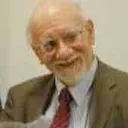Stay in the Loop
BSR publishes on a weekly schedule, with an email newsletter every Wednesday and Thursday morning. There’s no paywall, and subscribing is always free.
The art of happiness
Dolce Suono finishes its 2013-2014 season

I’ve never had any desire to be a musician or a visual artist, but I’ve always envied one aspect of their creative lives: Unlike writers, they can create works that are completely devoted to pleasure and joie de vivre, with no reference to the pains of life.
For writers, that’s a rare luxury. Fiction requires drama, and drama requires people wrestling with troubles and conflicts. Journalists must concentrate on crimes, disasters, and follies. No novelist or playwright ever achieved fame and fortune writing about a functional family. No journalist ever won a Pulitzer Prize reporting that thousands of law-abiding citizens walked around a downtown area, day after day, without assaulting one another.
Dolce Suono’s last two concerts of the season were both examples of happy events largely devoted to happy music. The April program included some vocal pieces with doleful subjects, but they were presented with so much verve that the music overrode the message of the lyrics. The May concert presented Latin American and Spanish instrumental music with all the buoyancy and rhythmic zest one would expect.
The April concert opened with two of John Dowland’s Lachrimae — Elizabethan songs that, as the title suggests, are packed with tears and sighs. They can be sung so mournfully they make me feel like someone should have given Dowland a Victorian “Buck up, old chap.” Mezzo-soprano Misoon Ghim gave them a forceful touch that overcame that feeling. The finale for the afternoon was the revenge aria from Mozart’s La clemenza di Tito, but the subject only added a dash of spice to a performance that blended Ghim’s spirited delivery with the complexities of an instrumental accompaniment that included a solo by a special guest, the Philadelphia Orchestra’s principal clarinet, Ricardo Morales.
The program even contained one vocal piece that completely bypassed all the emotions associated with texts — Rachmaninoff’s haunting Vocalise. The wordless vocal line transformed Ghim’s voice into an instrument that intermingled with the dark voices of a string trio and a flute playing in its lower register.
One of the most attractive features of the instrumental pieces was the sense that all the musicians were enjoying themselves, even though they were probably working like mountain climbers assaulting a vertical face. Mozart’s A Major Quartet for Flute and String Trio gains much of its appeal from the brightness the flute adds to the ensemble, but its composer made sure each instrument had its moment in the spotlight. Beethoven’s String Trio in G Major demonstrated that its composer could be just as assertive with three instruments as he could with 60.
Latin flavor
The May concert opened with a 20th-century gem — a trio for flute, cello, and piano that Mimi Stillman arranged from a 1933 trio written for the standard violin, cello, and piano combination. Flutists and guitarists like to expand their repertoire by abducting pieces written for the huge library created for the violin family. In this case, Joaquín Turina’s trio sounded so idiomatic for the flute I found it hard to believe its arcing melodies and bursts of piercing intensity were originally written for the violin.
The second piece on the program provided cellist Gabriel Cabezas with a showcase and a high-level public workout. Omaramor by the Argentine-born composer Osvaldo Golijov is a passionate 1991 solo for unaccompanied cello that includes striking passages, such as a section in which Cabezas played a high-singing melody while he accompanied himself with a strummed bass part.
The second half opened with another piece by a living composer — David Amram’s 1961 "Discussion for Flute, Cello, Piano and Percussion." "Discussion" is a dialogue among a varied set of instruments, as the title indicates, but it’s also a dialogue among different styles, written in memory of jazz bass player Oscar Pettiford. It includes a lament inspired by Pettiford’s Choctaw Indian background and a Latin-jazz finale. It’s remarkably compact, given the variety Amram packed into it.
The rest of the program consisted of short pieces in a lighter vein — two dances from Bernstein’s West Side Story, a lullaby by de Falla, and pieces based on Cuban, Brazilian, and Argentine dance forms. The audience supplied the finger-snapping for Bernstein’s “Cool” and produced a chorus for the Cuban dance.
Building bridges
It was a light finish for a Dolce Suono concert — compared, for example, to the December concert that ended with pianist Charles Abramovic playing one of Prokofiev’s lengthy war sonatas. The pieces all had just enough depth it didn’t seem shallow, and it was a contribution to a worthy effort.
The concert was associated with a Dolce Suono program, funded by a Knight Arts Challenge grant, that’s building bridges between classical music and the Philadelphia Latino community. The day after the concert, the entire ensemble presented part of the program, along with pieces by Bach and Beethoven, in a free community concert on Rising Sun Avenue, complete with an instrumental “petting zoo” that let children handle the instruments.
Like good children’s literature, a program like that should appeal to both children and experienced adults. Mimi Stillman and her colleagues seem to have found the right blend of musical weight and finger-snapping bounciness.
What, When, Where
Dolce Suono, DSE Goes to Society Hill: Beethoven, String trio in G Major. Mozart, Quartet for Flute, Violin, Viola, and Cello in A Major. Piazzolla, Libertango. Arias and songs by Dowland, Rameau, Handel, Rachmaninoff, Mozart. Misoon Ghim, mezzo-soprano. Mimi Stillman, flute. Ricardo Morales, clarinet. Amy Oshiro-Morales, violin. Burchard Tang, viola. Priscilla Lee, cello. Charles Abramovic, harpsichord.
April 27, 2014 at Old Pine Street Presbyterian Church, 412 Pine Street, Philadelphia.
Dolce Suono, Música en tus Manos: Trios, quartets, and solos by Turina, Villa-Lobos, De Falla, Ginastera, Piazzolla, Golijov, Bernstein, and Amram. Mimi Stillman, flute. Gabriel Cabezas, cello. Charles Abramovic, piano. Gabriel Globus-Hoenich, percussion.
May 31, 2014 at Gould Rehearsal Hall, Curtis Institute of Music. 1616 Locust Street, Philadelphia.
Dolce Suono: 267-252-1803 or www.dolcesuono.com.
Sign up for our newsletter
All of the week's new articles, all in one place. Sign up for the free weekly BSR newsletters, and don't miss a conversation.

 Tom Purdom
Tom Purdom